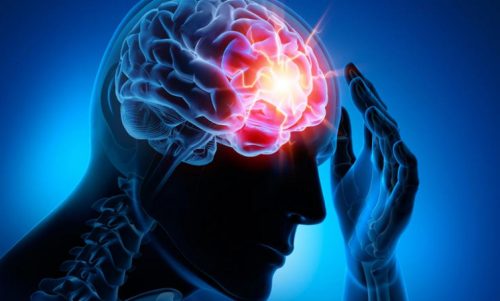The Four Most Common Cerebrovascular Diseases


Written and verified by psychologist Valeria Sabater
Cerebrovascular diseases (CVD) refer to all conditions where the circulation of blood flow to a particular part of the brain is either temporarily or permanently cut off.
Everyone knows, either directly or indirectly, of someone who has suffered a stroke or an aneurysm.
These diseases can have permanent effects and can even be fatal. At best, they are very frightening and should motivate you to take better care of your life and habits.
Most people, however, aren’t sufficiently aware of this type of disease.
Unless you’ve had one of these experiences yourself, or have a loved one or friend who has, you might not understand the impact certain factors can have on the health of your brain – including high blood pressure, high cholesterol, or being overweight.
Too many deaths occur every year due to preventable cerebrovascular diseases. Others, however, like strokes that affect very young and healthy people, are sad realities that defy reason or logic.
Nevertheless, there are certain factors that you should consider with respect to these kinds of cerebrovascular diseases and their associated indicators in order to reduce their impact on your life.
It’s something dedicating your time and energy to learning about them.
The four most common cerebrovascular diseases
As we pointed out at the start, cerebrovascular diseases are characterized by an interruption in the blood supply to the brain.
Any alteration in your blood flow can lead to two types of problems: ischemic and hemorrhagic. The ischemic variety is without a doubt the most common, and it typically has the same origin in all patients: atherosclerosis.
We have covered the subject of atherosclerosis several times on this blog.: It occurs when you have very high cholesterol levels along with inflammation in the arteries of the brain.
Discover: These perfect tricks to improve your memory
All of this leads to a slow, progressive, and very debilitating disease: the build-up of plaque in your blood vessels. This causes problems with the circulation of blood to your brain, eventually causing cognitive problems and dementia.
This is not an insignificant issue: prevention and having good lifestyle habits now will really pay off in the future.
 1. Cerebral thrombosis
1. Cerebral thrombosis
- Thrombosis is an ischemic stroke
- In 80% of cases, they have this origin
- They occur when arteries in the brain narrow due to something blocking the flow of blood – the thrombus
This type of disorder usually issues a few small warnings before the cerebral arteries completely close.
That’s why it’s vital to be attentive to the symptoms:
- Numbness or tingling on one side of the body
- Severe headache
- Difficulty communicating or understanding things
- Dizziness and trouble walking
- Problems with your vision
2. Cerebral embolism

In this case an embolism is produced by a piece of plaque that detaches from an artery wall and reaches the brain.
Unlike cerebral thrombosis, the plaque can break away far from the obstruction itself, typically near the heart.
The symptoms are similar to thrombosis: numbness on one side of the body, difficulty expressing yourself or communicating.
If a patient with an embolism is treated quickly, they can receive a drug called tPA that can dissolve the plaque. Life expectancy is significantly improved if this works.
3. Cerebral or intracerebral hemorrhage
We’ve already discussed the two most common ischemic brain disorders. Now we want to describe the conditions that a hemorrhage can cause.
The most common is the aneurysm. In these cases, there is an abnormal dilation of a weak part of a blood vessel in the brain.
- When an aneurysm ruptures, a cerebral hemorrhage appears
- Despite the impacts of an aneurysm, ischemic strokes continue to be the most damaging and claim more lives each year
The biggest problem with an aneurysm is that it doesn’t have a lot of symptoms.
Some people will have a dilated blood vessel in their brain for years without noticing anything until under a certain pressure at a given moment, it ruptures.
4. Subarachnoid hemorrhage

The rupture is found in the space between the brain and the skull, but never enters the brain itself.
Life expectancy after this type of rupture depends on how quickly you receive medical attention. It’s critical to recognize the symptoms:
- Difficulty concentrating
- Discomfort under bright lights
- Irritability, moodiness, changes in personality
- Neck and shoulder pain
- Vomiting and dizziness
- Seizures
The most obvious symptom relates to your vision. You might lose your sight for a few minutes, or see very bright lights or other optical phenomena.
In case you have any problem or minor anomaly, it’s best to trust your instincts: call your health professional immediately.
All cited sources were thoroughly reviewed by our team to ensure their quality, reliability, currency, and validity. The bibliography of this article was considered reliable and of academic or scientific accuracy.
- Capecchi, M., Abbattista, M., & Martinelli, I. (2018). Cerebral venous sinus thrombosis. Journal of Thrombosis and Haemostasis. https://doi.org/10.1111/jth.14210
- Capriotti, T., & Murphy, T. (2016). Ischemic Stroke. Home Healthcare Now. https://doi.org/10.1097/NHH.0000000000000387
- Parker, C. D., & Shea, C. M. (2017). Cerebral air embolism. American Journal of Emergency Medicine. https://doi.org/10.1016/j.ajem.2016.07.055
- Raichle, M. E. (2008). Cerebral blood flow and metabolism. In Outcome of Severe Damage to the Central Nervous System. https://doi.org/10.1002/9780470720165.ch6
- van Gijn, J., Kerr, R. S., & Rinkel, G. J. (2007). Subarachnoid haemorrhage. Lancet. https://doi.org/10.1016/S0140-6736(07)60153-6
- I C T U S. (2017). Retrieved 30 May 2020, from https://webcache.googleusercontent.com/search?q=cache:RN12m79F7EgJ:https://www.portalfarma.com/Profesionales/campanaspf/categorias/Documents/2017-Guia-Prevencion-Ictus.pdf+&cd=10&hl=es&ct=clnk&gl=es&client=firefox-b-d
-
Stang, P. E., Carson, A. P., Rose, K. M., Mo, J., Ephross, S. A., Shahar, E., & Szklo, M. (2005). Headache, cerebrovascular symptoms, and stroke: the Atherosclerosis Risk in Communities Study. Neurology, 64(9), 1573-1577.
This text is provided for informational purposes only and does not replace consultation with a professional. If in doubt, consult your specialist.








